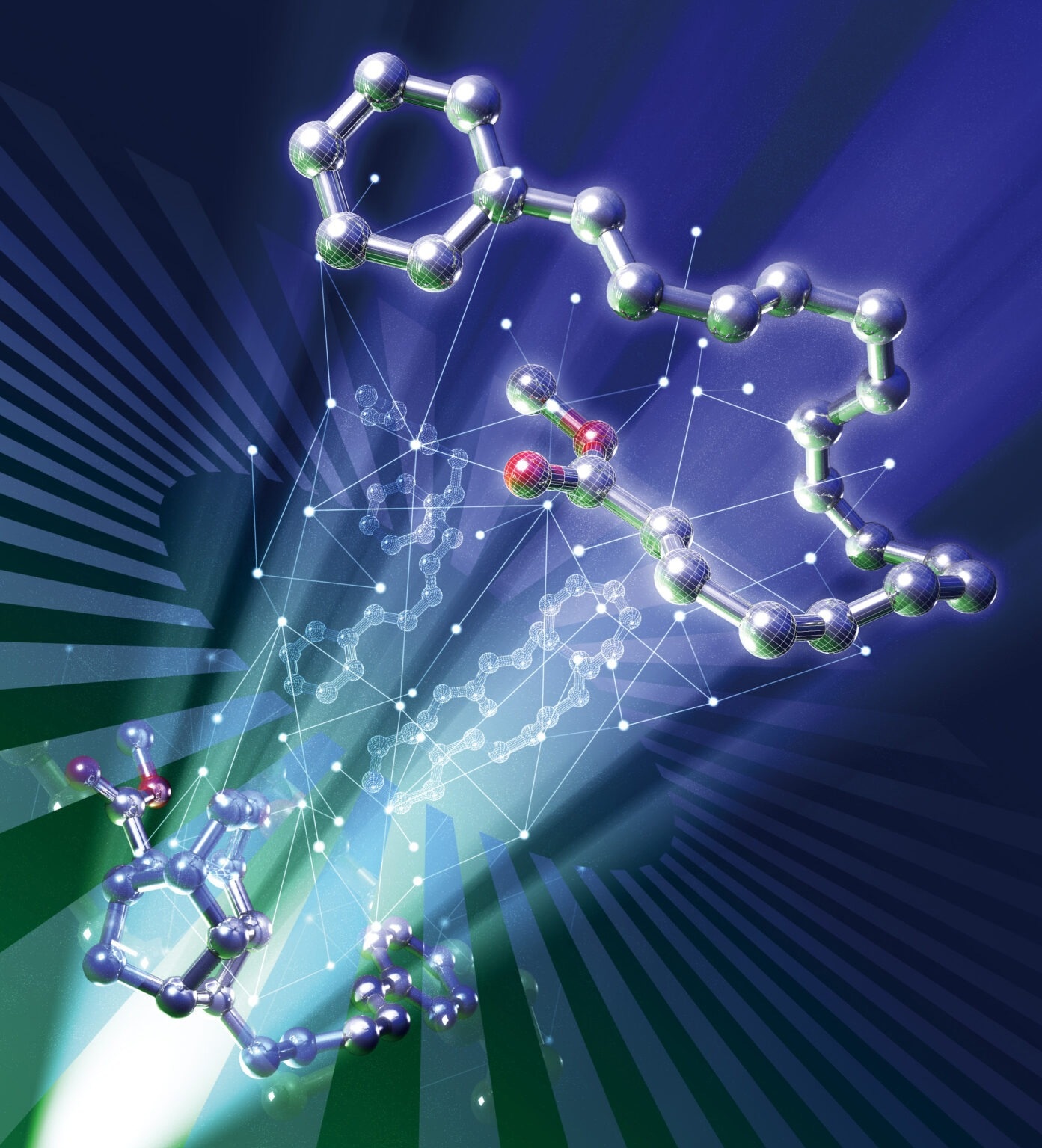Reviewed by Alex SmithDec 2 2022
Scientists at the Institute for Chemical Reaction Design and Discovery (WPI-ICReDD) have illustrated the augmented use of the Artificial Force Induced Reaction (AFIR) method, which predicts pericyclic reactions with exact stereoselectivity using only details about the target product molecule.
 The AFIR method traces back the reaction of endiandric acid C methyl ester, a 52-atom natural product, to its starting materials using only quantum chemical calculations. Image Credit: Tsuyoshi Mita et al. JACS.
The AFIR method traces back the reaction of endiandric acid C methyl ester, a 52-atom natural product, to its starting materials using only quantum chemical calculations. Image Credit: Tsuyoshi Mita et al. JACS.
For such an automated reaction route search approach, an accurate estimate of a molecule’s stereochemistry—that is, the 3D arrangement of its constituent atoms—is necessary. This work demonstrates that the AFIR approach can be used to uncover novel reactions with particular stereochemistry.
AFIR is employed in this research to estimate retrosynthetic, or reverse, reactions that occur between product molecules and starting components. Earlier, AFIR was used to forecast small, simple reactions, but reliable stereochemistry predictions were above the technique's capabilities, restricting its application.
This barrier was overcome in this study by employing the AFIR approach on a key class of chemical reactions known as pericyclic reactions, which are often seen in biological processes such as vitamin D synthesis.
The fact that pericyclic reactions share the same stereochemical relationship, whether they occur forward or backward, is an important trait. This allowed the team to precisely forecast the stereochemistry of the forward reaction using the stereochemistry computed for the backward reaction. Interestingly, AFIR correctly predicted stereochemistry for a reaction that defied the Woodward-Hoffman rules, which normally regulate the behavior of pericyclic reactions.
This technique’s ability to forecast exceptions to these standard rules illustrates the possibility of employing this automated method to find unintuitive reactions that would otherwise go unnoticed.
Since pericyclic reactions are concerted, all bond-breaking and bond-making occur in a single step; they are also beneficial for computational work. Since such reactions do not include ionic intermediates, it is difficult for solvent molecules to influence the reaction, allowing scientists to neglect solvent effects in their computations.
As these computations are easier to conduct, more complicated molecules can be handled. AFIR successfully handled molecules with up to 52 atoms in this investigation, which was more than 2.5 times the size of molecules in previous studies.
Interestingly, the only information required to apply AFIR is the structure of the intended product molecule, thus, scientists may enter a molecule and hit the rewind button to locate potential starting materials. Applying AFIR to bigger molecules and stereospecific procedures has created additional avenues for automated reaction discovery.
The relevance of adopting an automated approach to recreate historically noteworthy reactions impressed lead author Tsuyoshi Mita as well.
The Woodward-Hoffmann Rules were established in the 1960s and I think it is very profound that 60 years later we are able to use automated reaction path searching methods to predict a reaction’s starting materials with stereochemistry that follows these rules.
Tsuyoshi Mita, Study Lead Author, Institute for Chemical Reaction Design and Discovery
Tsuyoshi Mita details, “Endiandric Acid C was synthesized by Nicolau in 1982 based on Black’s biosynthetic hypothesis, and I am very pleased that in this work we were able to recreate what was in their heads using quantum chemical computations. I am both an organic synthetic chemist and a user of the AFIR method and in this project I was once again reminded of the power of the AFIR method.”
The study was funded by the Japan Science and Technology Agency Exploratory Research for Advanced Technology (JST-ERATO) grant (JPMJER1903), Japan Society for the Promotion of Science (JSPS) World Premier Initiative (WPI), and JSPS Grants-in-Aid for Challenging Research (Exploratory) (21K18945), Scientific Research (B) (22H02069), Transformative Research Areas (A) [Digitalization-driven Transformative Organic Synthesis (Digi-TOS)] (22H05330), and Young Scientists (22K14673).
The study was also supported by the Fugaku Trust for Medical Research, the Uehara Memorial Foundation, the Naito Foundation, and the US National Science Foundation (CHE-1764328). All calculations were performed using the supercomputer Fugaku provided by the RIKEN Center for Computational Science as well as the supercomputer system at the Information Initiative Center, Hokkaido University, Sapporo, Japan.
The usage of the GRRM and Gaussian programs on the supercomputer Fugaku was facilitated with the support of HPC Systems, Inc.
Journal Reference:
Mita, T., et al. (2022) Prediction of High-Yielding Single-Step or Cascade Pericyclic Reactions for the Synthesis of Complex Synthetic Targets. Journal of the American Chemical Society. doi.org/10.1021/jacs.2c09830.